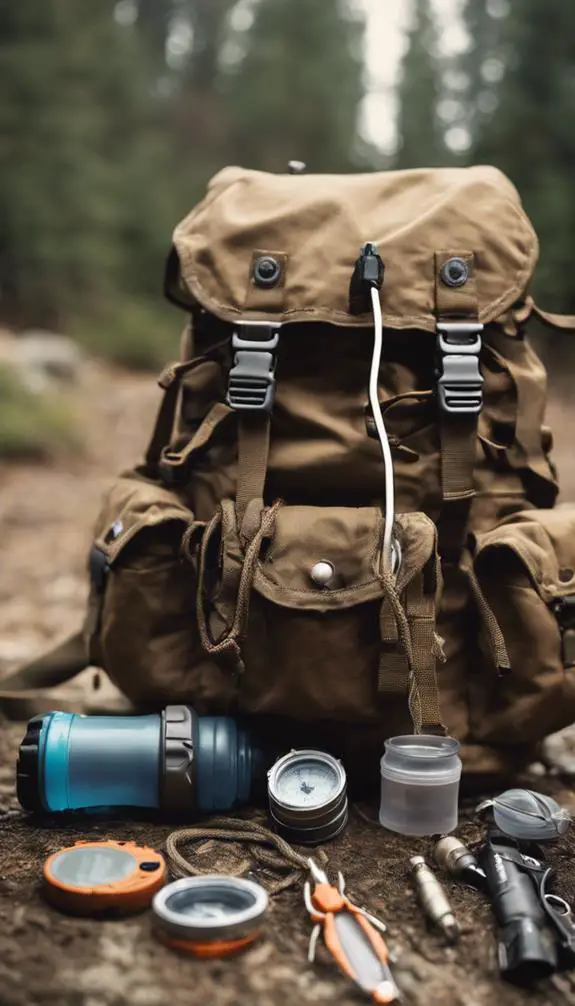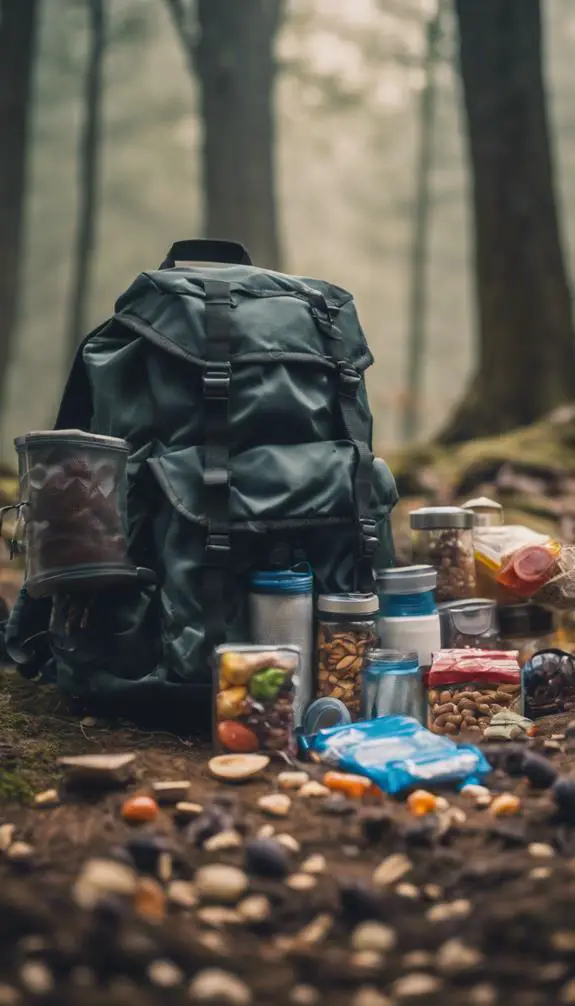As you prepare for the unexpected, it's vital to prioritize the right tools to increase your chances of survival. You're likely aware that having a well-stocked kit is essential, but do you know which specific items are must-haves? From navigation essentials to water purification methods, you'll need to ponder a range of tools to guarantee you're equipped to respond to various survival situations. But where do you even start? Let's break down the absolute essentials every prepper should have, so you can rest assured you're ready for whatever comes next.
Summary
- A reliable compass and understanding of celestial navigation are crucial for wilderness survival when GPS fails.
- A water testing kit, portable filters, and purification tablets ensure access to clean drinking water in emergency situations.
- Fire starting tools like spark generation methods, matchless fire starters, and flint and steel are essential for warmth, cooking, and signaling.
- A durable tarp, rope, and tarp anchors provide a reliable shelter, while self-defense weapons like handguns, rifles, and blades offer protection.
- A multi-tool, such as a Swiss Army knife, and compact accessories like pocket chainsaws, whistles, and flashlights increase preparedness without added weight.
Navigation Essentials for Wilderness Survival
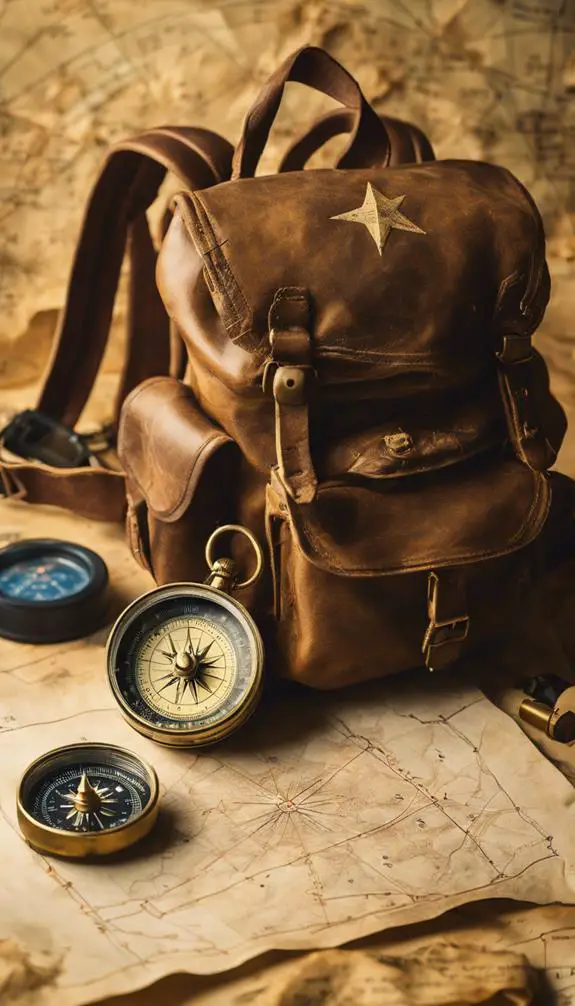
When venturing into the wilderness, uncertainty can be a deadly companion.
You need reliable tools to stay on track and find your way back to civilization. A magnetic compass is a must-have, providing a reliable reading of the Earth's magnetic field to guide you.
But what if your compass fails or you're stuck in a dense forest? That's where celestial navigation comes in.
By learning to identify constellations and use the position of the sun, moon, and stars, you can estimate your direction and location.
Don't rely on GPS or gadgets that can fail; instead, develop the skills to navigate like your ancestors did.
With a magnetic compass and a solid understanding of celestial navigation, you'll be better equipped to survive in the wilderness.
Water Purification Methods
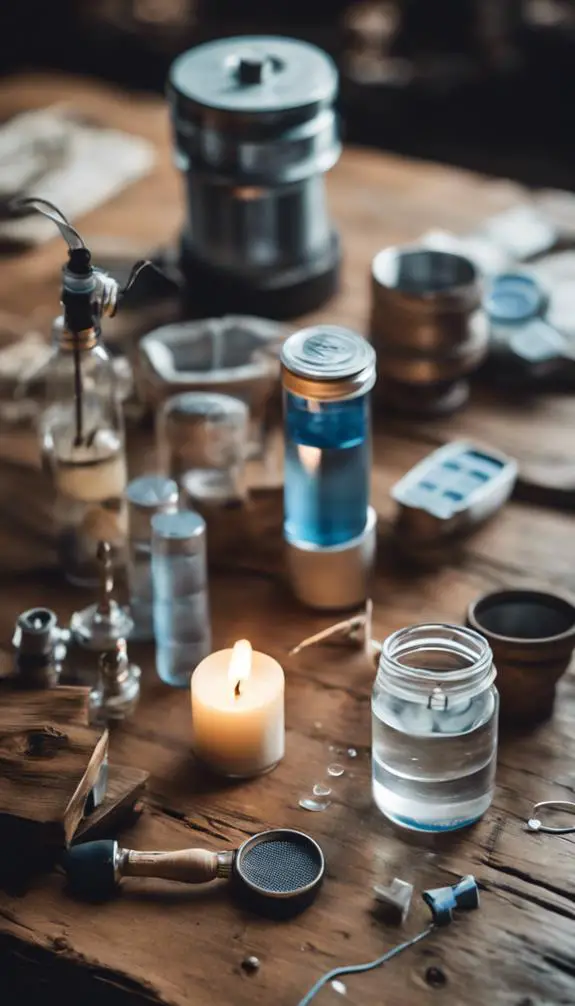
After traversing the wilderness, you'll need to find a reliable source of water to quench your thirst.
But don't drink it yet! You must purify the water to avoid waterborne illnesses. Invest in a water testing kit to detect contaminants like bacteria, viruses, and heavy metals.
Once you've identified the contaminants, use a portable filter to remove them. Look for filters with a high micron rating to guarantee they capture even the smallest impurities.
You can also use purification tablets or UV light devices as a backup. Remember, having access to clean drinking water is vital for survival. Stay safe and healthy by always purifying your water before consumption.
Fire Starting Tools
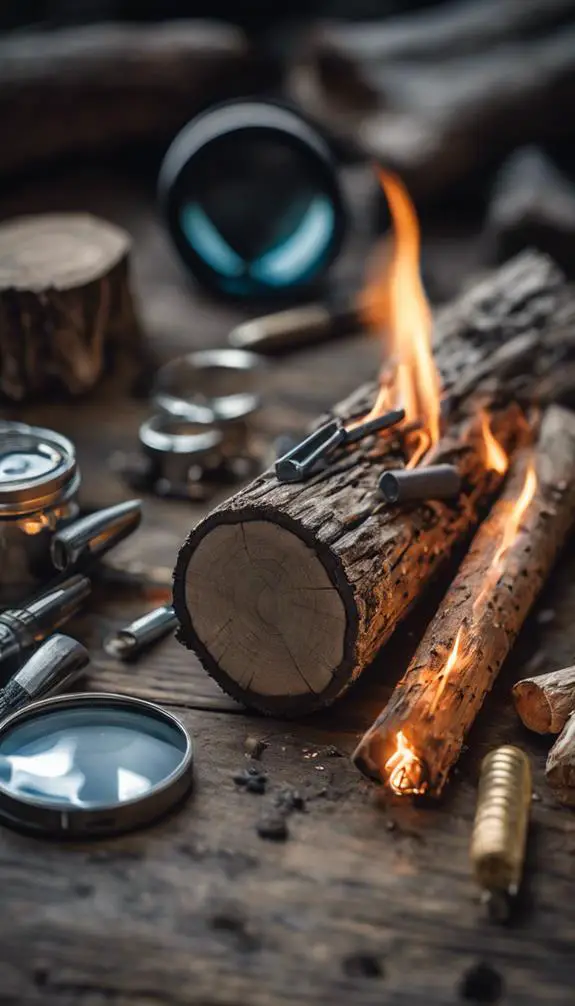
You'll need reliable fire starting tools to stay warm, cook food, and signal for help in a survival situation.
When it comes to sparking a fire, you have several options, including spark generation methods, matchless fire starters, and the classic flint and steel.
Spark Generation Methods
Generate sparks with ease using these reliable spark generation methods, essential for igniting fires in the wilderness.
You'll want to have a spark wheel and friction rod in your survival kit. Spark wheels, like flint and steel, produce sparks when you turn the wheel, generating a flame.
Friction rods, on the other hand, create sparks when you apply pressure and friction to the rod. Both methods are effective and easy to use, even in wet or windy conditions.
Practice using them to verify you can start a fire quickly and efficiently. Having a reliable spark generation method is vital for survival, providing warmth, light, and a way to cook food.
Matchless Fire Starters
Your survival kit isn't complete without matchless fire starters, essential tools for igniting fires in emergency situations.
These tools guarantee you can start a fire even when matches or lighters are unavailable. Ferrocerium rods, also known as firesteels, are a reliable option. They generate sparks when scraped with a metal striker, making them a great backup for spark generation methods.
Char Cloth Methods are another effective way to start a fire. By creating char cloth from natural materials, you can use it as a tinder to ignite fires. Both of these methods are easy to learn and will give you the confidence to start a fire in any situation.
Flint and Steel
Focusing on ancient yet reliable fire starting methods, flint and steel tools have been a staple in outdoor survival for centuries.
You'll find that a quality flint is essential, with a history dating back to ancient civilizations. Look for a flint made from high-carbon content, like chert or obsidian, which produces a hotter spark.
When selecting a steel, opt for high-carbon steel or stainless steel, as they produce a better spark. Consider a steel with a sharp edge, making it easier to generate sparks.
With a flint and steel, you can start a fire in any weather condition, making it an essential tool in your survival kit. Practice using your flint and steel to guarantee you can start a fire quickly and efficiently when you need it most.
Shelter Building Equipment

A reliable tarpaulin is the backbone of any shelter building endeavor, providing a waterproof layer between you and the elements.
You'll need a way to secure it, so don't forget tarp anchors to keep your shelter in place. Make sure you have a sturdy rope with adjustable tensions to guarantee your tarp remains taut and secure.
You don't want it flapping in the wind or sagging under snow. Invest in a durable rope that can withstand harsh weather conditions.
With these essentials, you'll be well on your way to building a shelter that will keep you dry and protected. Remember, a solid shelter is key to survival, so don't skimp on these critical components.
First Aid Kit Must-Haves
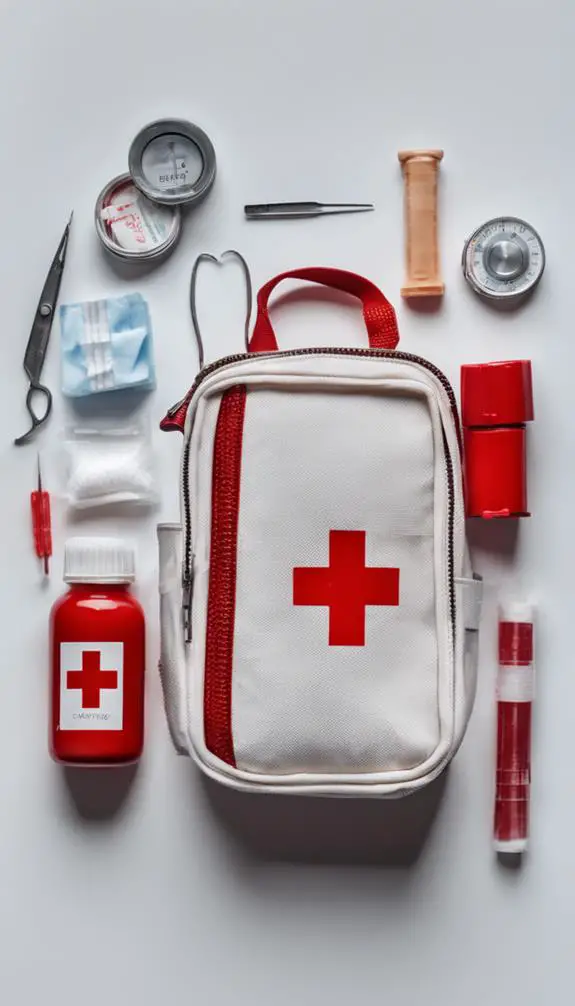
Gear up for medical emergencies by stocking your first aid kit with essentials that can mean the difference between life and death.
You'll need bandages in various sizes, gauze pads, and antiseptic wipes to treat wounds. Don't forget medical tape for securing dressings and wound closure strips for deeper cuts.
Include pain relievers, antihistamines, and antibiotic ointments to combat infections.
A thermometer, tweezers, and scissors will come in handy for diagnosing and treating various conditions.
Add a first aid guide to guarantee you're prepared to respond to any medical situation.
Food Procurement Tools
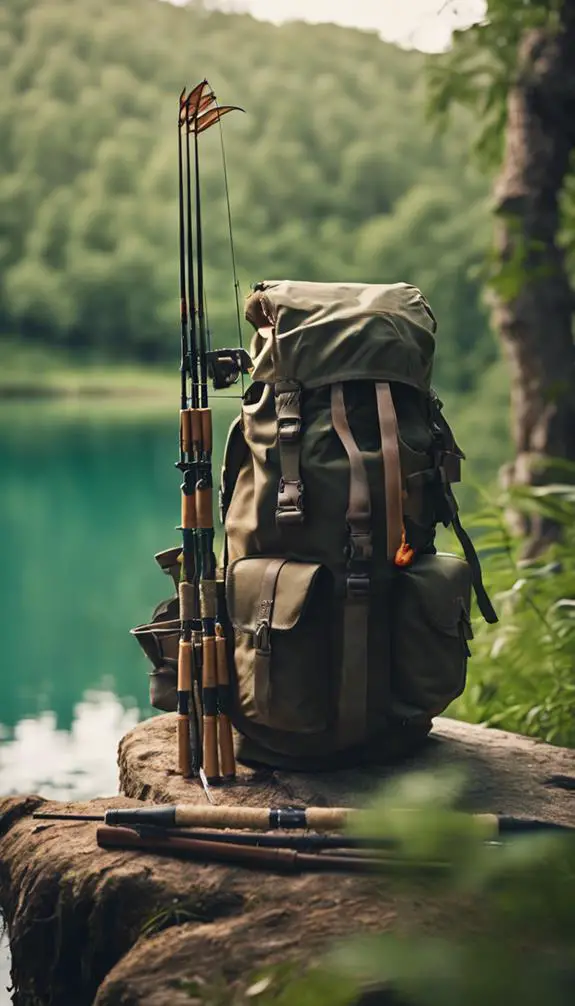
You'll need reliable food procurement tools to guarantee a steady supply of sustenance in a survival situation.
A portable fishing net is a must-have for catching fish in rivers, lakes, or streams. It's lightweight, compact, and can be easily stowed away in your backpack.
For hunting, invest in a high-quality hunting blind that allows you to conceal yourself from your prey. Look for one that's waterproof, durable, and has a sturdy frame.
Additionally, consider adding a trapping kit to your arsenal, complete with snares, traps, and lures. These tools will increase your chances of securing a steady food supply, giving you peace of mind in a survival scenario.
Self-Defense Weapons
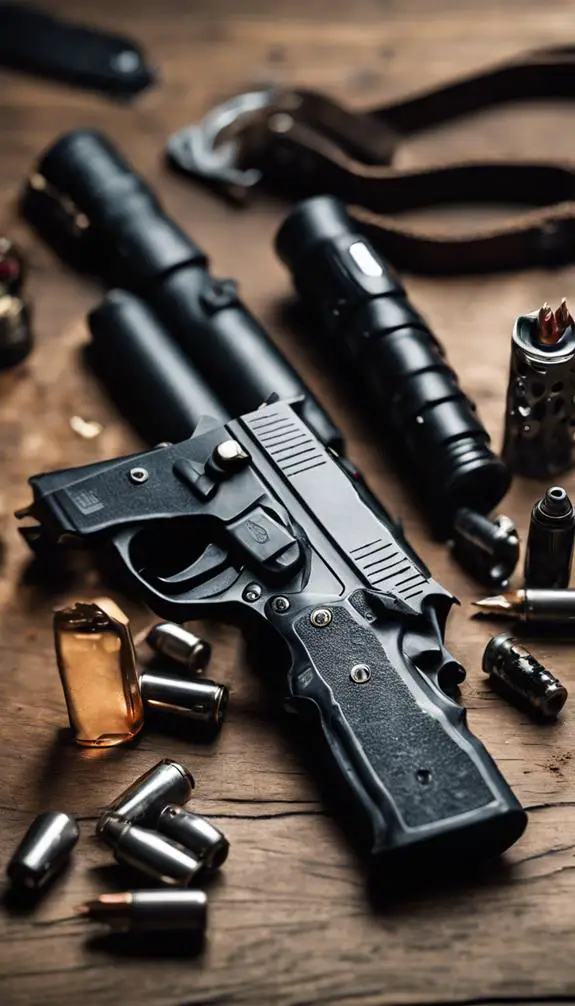
Three essential self-defense weapons should be part of your survival arsenal: a handgun, a rifle, and a blade.
You'll want to invest in handgun training to guarantee you can accurately and safely use your handgun in high-stress situations.
Consider adding pepper spray to your arsenal as a non-lethal option. Learn pepper spray techniques, such as how to correctly aim and use the spray to disable an attacker.
Don't forget to choose a blade that's durable and easy to use, like a tactical knife or machete.
With these three self-defense weapons, you'll be better equipped to protect yourself and your loved ones in a survival situation.
Communication Devices

When a disaster strikes, self-defense is just the first step in ensuring your survival.
You'll also need to establish reliable communication to call for help, receive critical updates, and stay connected with your loved ones. That's where communication devices come in.
You should consider investing in a satellite phone, which allows you to make calls even when traditional networks are down. Another essential tool is an emergency beacon, such as a Personal Locator Beacon (PLB) or an Emergency Position-Indicating Radio Beacon (EPIRB).
These devices send distress signals to emergency responders in life-threatening situations. Don't assume you'll always have cell service; prepare for the worst with these communication devices to stay safe and connected during a crisis.
Multi-Tool Options

You're likely familiar with the classic Swiss Army knife, but there are many other pocket-sized tool options that can be just as effective in a survival situation.
You'll want to weigh the features that matter most to you, such as blade length, screwdriver functionality, and plier capabilities. Additionally, fixed blade alternatives can provide a more heavy-duty option for when you need a bit more heft in your multi-tool.
Pocket-Sized Tool Options
In the midst of a crisis, every ounce of space in your backpack or pocket counts, making pocket-sized tool options a crucial component of your prep kit.
You need tools that are compact, yet effective. Multi-tool options like pocket chainsaws can help you cut through obstacles, while tool belts can keep your essential gear within easy reach.
When choosing pocket-sized tools, prioritize durability, versatility, and ease of use. Look for tools with multiple functions to maximize space efficiency.
Consider adding a compact fire starter, a whistle, or a small flashlight to your kit. Remember, the goal is to be prepared without being weighed down.
Fixed Blade Alternatives
Shift your attention to fixed blade alternatives that offer a more versatile solution for your prep kit.
Instead of carrying a single-purpose fixed blade, consider multi-tool options that can adapt to various situations. Belt knives, for instance, can be easily stowed and accessed when needed.
Neck daggers, on the other hand, provide a discreet and accessible option for close quarters. These alternatives offer the reliability of a fixed blade while providing additional functionality and flexibility.
They're ideal for preppers who need to stay mobile and adaptable in emergency situations. By incorporating these alternatives into your prep kit, you'll be better equipped to handle unexpected challenges and stay one step ahead.
Lighting Solutions
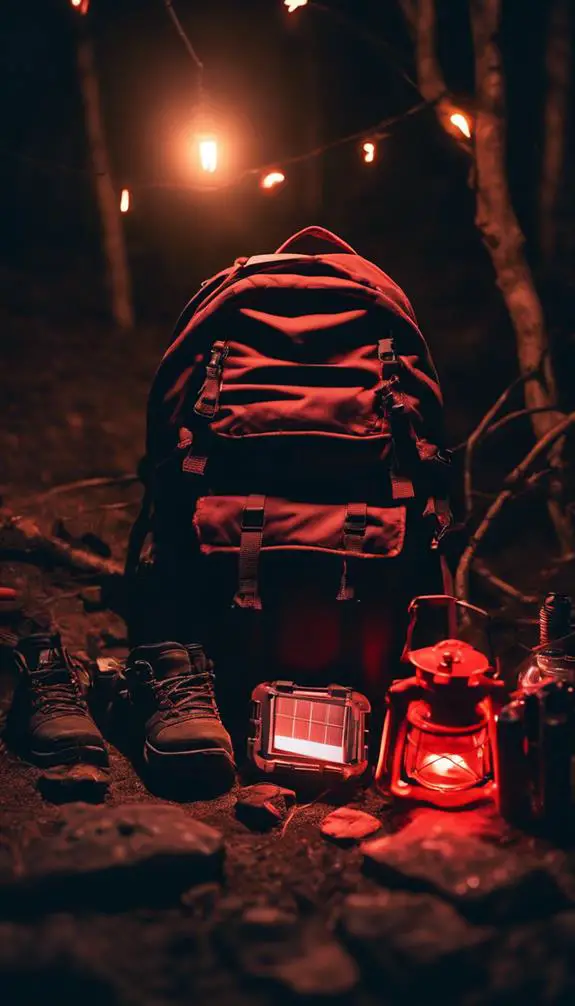
When disaster strikes, your flashlight becomes an essential lifeline, cutting through the darkness to help you navigate treacherous terrain, identify potential threats, and perform critical tasks.
You'll need reliable lighting solutions to stay safe and in control. Invest in solar lanterns, which harness renewable energy and eliminate battery worries.
LED flashlights are another must-have, offering bright, energy-efficient light that can last for hours. Look for models with adjustable brightness, strobe functions, and durable construction.
Don't rely on a single light source; pack multiple options to guarantee you're never left in the dark. By including these essential lighting tools in your survival kit, you'll be better equipped to face any situation that comes your way.
Personal Hygiene Items
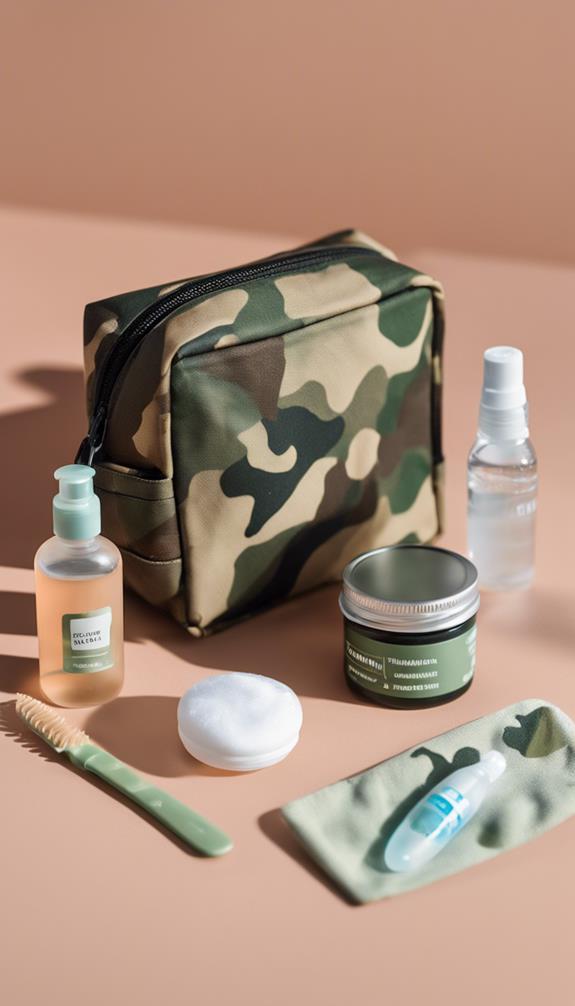
Your personal space may be limited in a survival situation, but that's no excuse to neglect personal hygiene.
You'll want to prioritize cleanliness to prevent the spread of illness and maintain morale. Pack a portable Toiletry Kit with essentials like toothbrush, toothpaste, biodegradable soap, and toilet paper.
Don't forget Hand Sanitizers, which can be a lifesaver when water is scarce. Look for compact, travel-sized items to conserve space in your kit.
Remember, personal hygiene is vital in a survival situation – it's not just about feeling fresh, it's about staying healthy and avoiding preventable illnesses.
Weather Forecasting Tools
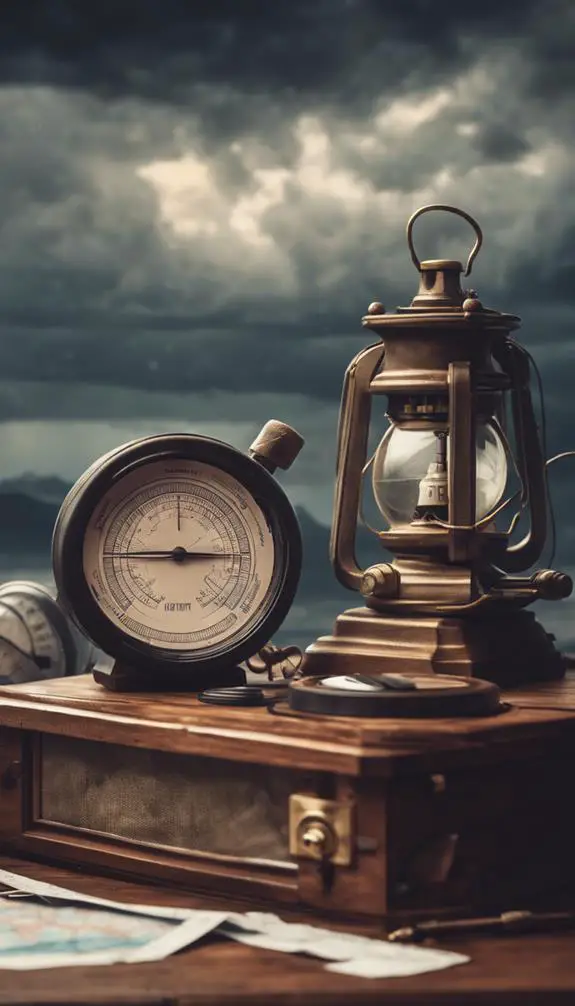
At least three-quarters of survival situations involve unpredictable weather patterns, making it crucial to include weather forecasting tools in your survival kit.
You'll want to stay one step ahead of severe weather conditions to guarantee your safety. Invest in a reliable cloud reader, which will help you identify cloud formations that signal approaching storms.
A storm tracker will also be essential in monitoring weather patterns and predicting potential threats. These tools will enable you to make informed decisions about when to seek shelter, find alternative routes, or adjust your survival strategy.
Signaling for Help

Signaling devices are crucial components of your survival kit, as they can mean the difference between rescue and prolonged survival situations.
You should have multiple signaling options in your kit to guarantee you can get attention in various scenarios. A Distress Flag is a must-have, as it's a universally recognized signal for help.
When flying a Distress Flag, make sure it's visible from a distance and not obstructed by obstacles.
Whistle Signals are another essential tool, as they're loud and can be heard from far away.
Learn the international whistle signal for help, which is three short blasts on a whistle followed by a pause.
Practice using your signaling devices so you're prepared in case of an emergency.
FAQs
Can I Prepare My Own Survival Kit or Should I Buy One?
You can definitely prepare your own survival kit, taking advantage of DIY customization options to tailor it to your specific needs, but buying one can save time and guarantee essential items aren't overlooked.
How Often Should I Update and Restock My Survival Supplies?
You should regularly update and restock your survival supplies, incorporating supply rotation and kit auditing to certify expired items are replaced and your kit remains relevant, effective, and tailored to your evolving needs.
Are There Any Specific Laws Regarding Carrying Self-Defense Weapons?
You should research concealed carry laws in your state and familiarize yourself with weapon regulations, as they vary widely; understanding these laws will help you carry self-defense weapons legally and confidently.
Can I Use My Smartphone as a Reliable Navigation Tool?
When you're off-grid, you can rely on your smartphone's GPS for navigation, but be aware of its limitations. Check GPS accuracy and understand map limitations, like incomplete trails or outdated data, to guarantee you're not led astray.
How Do I Maintain My Survival Skills and Stay Proficient?
You stay proficient by scheduling regular skill refreshers, like practicing fire starting or shelter building, and incorporating proficiency drills into your daily routine, ensuring you're always ready to respond in a survival situation.
Conclusion
You've got the essential tools to increase your chances of survival. Now it's time to put them to use. Stay alert, adapt to your environment, and trust your instincts. Remember to regularly check and maintain your gear to guarantee it's in working order. With these tools and a clear head, you'll be better equipped to face whatever wilderness survival throws your way.

